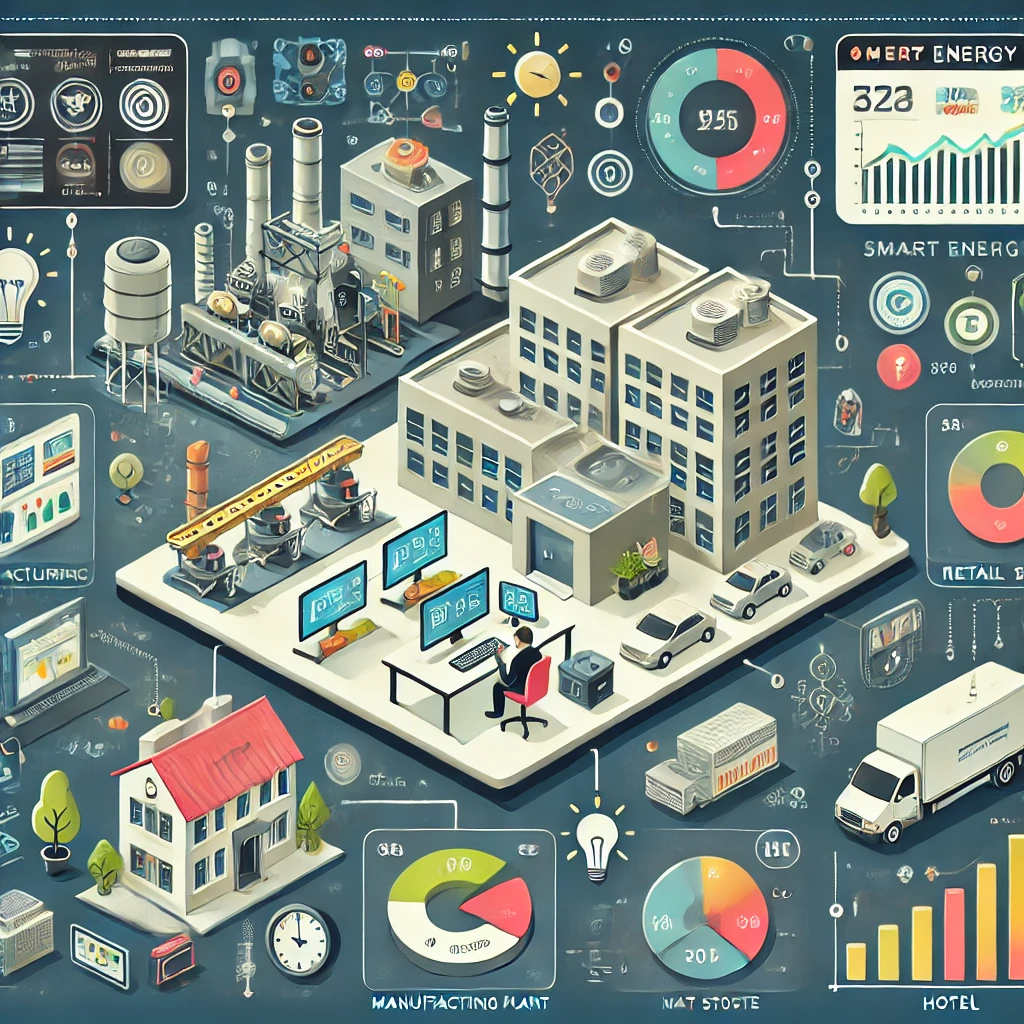Imagine this: your business is thriving, but your energy bills are skyrocketing. You know something’s off, but you can’t pinpoint where the waste is happening. Sound familiar? The truth is, energy costs are one of the biggest expenses for businesses, and without the right tools, it’s nearly impossible to manage them effectively.
Enter energy monitoring tools—your secret weapon for understanding and reducing business energy costs. In this guide, we’ll explore how these tools, paired with smart data solutions, can transform the way you manage energy, save money, and boost your sustainability efforts. Ready to take control of your energy usage? Let’s dive in.
What Are Energy Monitoring Tools?
Energy monitoring tools are systems or software designed to track, analyze, and optimize energy consumption in real time. These tools collect data from various sources—like meters, sensors, and IoT devices—and provide actionable insights through dashboards, reports, and alerts. Think of them as a fitness tracker for your business’s energy usage. They don’t just tell you how much energy you’re using; they help you understand how and when you’re using it.
For example, a retail store might use an energy monitoring tool to identify that its HVAC system is running at full capacity during off-hours. With this insight, the store can adjust settings to save energy without compromising customer comfort.
Why Are Energy Monitoring Tools Important for Businesses?
Energy costs can make or break a business’s bottom line. Whether you’re running a small café or a large manufacturing plant, inefficient energy use leads to unnecessary expenses. Here’s why energy monitoring tools are a game-changer:
- Cost Savings: By identifying energy waste, businesses can reduce utility bills significantly.
- Sustainability: Lower energy consumption means a smaller carbon footprint—a win for the planet and your brand’s reputation.
- Operational Efficiency: These tools help you spot inefficiencies in equipment and processes, leading to better decision-making.
- Compliance: Many industries face strict energy regulations. Monitoring tools ensure you stay compliant and avoid fines.
How Do Energy Monitoring Tools Work?
Energy monitoring tools rely on a combination of hardware and software to collect and analyze data. Here’s how they function:
- Data Collection: Sensors and smart meters gather real-time data on energy usage from different parts of your business.
- Data Analysis: Advanced algorithms process the data to identify patterns, anomalies, and areas for improvement.
- Visualization: User-friendly dashboards display the data in easy-to-understand charts and graphs.
- Actionable Insights: Recommendations are provided, such as adjusting equipment settings or upgrading to energy-efficient systems.
Example: A manufacturing plant might monitor the energy consumption of its machinery. If a machine is consuming more energy than usual, the tool can alert the maintenance team to investigate potential issues.
Common Challenges and Misconceptions
Despite their benefits, energy monitoring tools come with challenges. Here’s how to address them:
- High Initial Costs: Upfront costs may seem prohibitive, but long-term savings often outweigh the initial expense.
- Complexity: Modern tools are designed for ease of use, even for non-technical users. Choose a tool with a user-friendly interface.
- Data Overload: Focus on actionable insights rather than getting lost in excessive data.
How to Choose the Right Energy Monitoring Tool
Not all energy monitoring tools are created equal. Here’s how to find the right one:
- Assess Your Goals: Are you looking to reduce costs, improve sustainability, or comply with regulations?
- Consider Scalability: Choose a tool that grows with your business.
- Check Compatibility: Ensure the tool integrates with existing systems and equipment.
- Evaluate Features: Look for features like real-time monitoring, customizable reports, and mobile access.
- Read Reviews: Research tools used by others in your industry.
Real-World Examples of Energy Monitoring in Action
- Hospitality: A hotel chain used energy monitoring tools to track energy usage across properties, reducing lighting and HVAC inefficiencies. Outcome: 20% cost savings.
- Manufacturing: A factory used monitoring systems to identify faulty machinery consuming excess energy. Fixing the issue saved thousands of dollars annually.
- Retail: A grocery store optimized its refrigeration systems, reducing energy consumption during off-peak hours. Outcome: 15% lower energy bills.
Emerging Trends in Energy Monitoring
As technology evolves, energy monitoring tools are becoming even more advanced. Keep an eye on these trends:
- AI and Machine Learning: Enhanced predictions and recommendations.
- IoT Integration: Greater connectivity for real-time insights.
- Blockchain for Energy Tracking: Revolutionizing data transparency and security.
Conclusion
Energy monitoring tools are no longer a luxury—they’re a necessity for businesses aiming to cut costs, improve efficiency, and reduce their environmental impact. By leveraging smart data solutions, you gain unparalleled insights into energy usage and make informed decisions that benefit both your bottom line and the planet.

